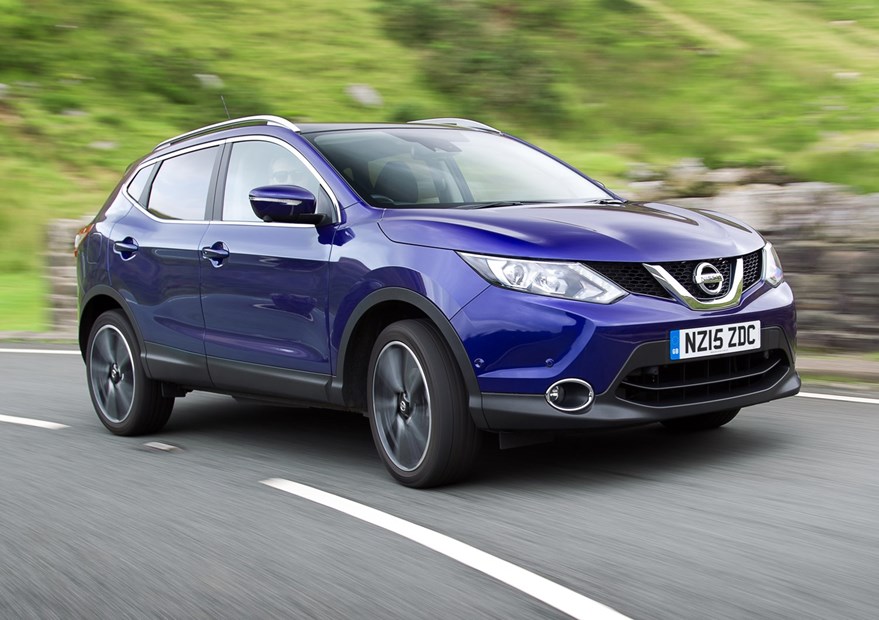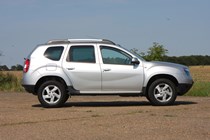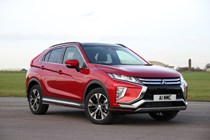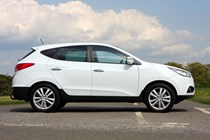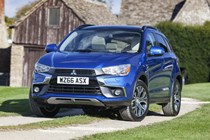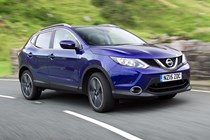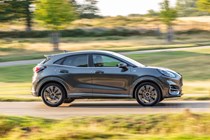SUVs are immensely popular. Seven of the UK’s top 10 best-selling new cars have been SUVs for the past three years, but most manufacturers have offered something in this sector for nearly two decades. Such popularity in the showroom means there’s a healthy stock of used cars in the classifieds.
We’ve compiled a list of the best secondhand family SUVs that you can buy a five-year old, low mileage example of for less than £15,000. That means they should qualify for manufacturer approved-used warranty schemes, and be as dependable as a new one. At least in theory – it’s always worth brushing up on your used car buying skills. Some are much cheaper if you get an older one, but they’re still expensive enough to attract dishonest dealers.
This list is aimed at buyers with families, as for carrying kids, relatives and kit SUVs make a lot of sense. They’re a little taller than a conventional hatchback, which makes them easier to load children and luggage into. They’re also far more stylish than a boxy old MPV. Some SUVs even capitalise on their extra ground clearance with four-wheel drive, which makes them both more planted on the tarmac and capable of tackling a spot of light off-roading.
Choose your SUV wisely and it won’t be that much more expensive to run than a regular hatchback, either. Most share their underpinnings with hatchbacks and feature the same front-wheel drive powertrains, so you only pay a minor aerodynamic penalty by opting for the bigger body style. Drive carefully and you should be able to extract 40mpg from every car in this list.
Scroll down for our list of the best used SUVs for £15,000. Then, if you find something that takes your fancy, head over to the Parkers cars for sale page to start shopping.
The best used family SUVs for less than £15,000
A small SUV that retains the joy of a supermini
Because it shares its underpinnings with the Fiesta, it’s great fun to drive. Most examples are powered by Ford’s economical 125hp 1.0-litre petrol engine, but if you’re prepared to spend a little more cash, you can have the modern interpretation of the hot hatch in the shape of a Puma ST. The Puma’s boot has a party piece, too – a 70-litre, waterproof box below the floor specifically designed to hold muddy shoes and wet dog towels. It’s a great all-rounder.
Read our full Ford Puma review
Pros
- Great fun to drive
- Eager engines
- Enormous boot
Cons
- Limited rear legroom
- Dashboard is bland
No-nonsense Duster is great value, especially if you need four-wheel drive


At the upper end of our budget, the Duster stands out because you'll be able to buy a four-wheel drive model. It's also worth noting that petrol versions can be found with factory-fitted LPG kits, giving the car a combined non-stop range of almost 800 miles. Unfortunately, you can't have BiFuel and 4x4, though. But for sheer value for money alone, the Duster is a super choice. Factor in its practicality and off-road prowess, and it’s hard to beat if you want a hard-working family SUV.
Read our full Dacia Duster review
Pros
- Good build quality for the price
- Practical and attractive interior
- Excellent off-road ability
Cons
- Less refined than some rivals
- Ride is a little unsettled
Sporty hybrid is cooler than a Prius, but just as economical
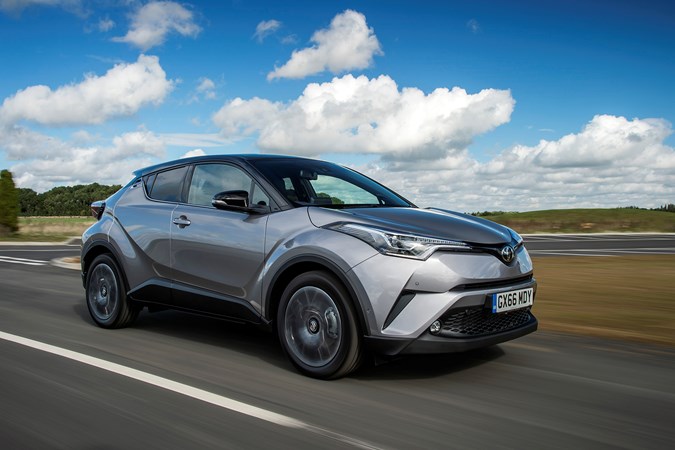

Despite the sporty looks the C-HR is quite practical and because it’s a hybrid, it dodges the taxes imposed by ULEZ and clean air zones. And because it’s a Toyota, it’ll keep running long after the heat death of the universe. If that isn’t enough, it also benefits from Toyota's stellar 10-year warranty package, so a low-mileage, five-year-old C-HR will have more cover than most brand new cars.
Read our full Toyota C-HR review
Pros
- Efficient hybrid powertrains
- Comfortable and engaging to drive
- Industry-leading 10-year warranty
Cons
- Sloping roof impedes practicality
- All-wheel-drive models aren't hybrid
Sensible, attractive small SUV benefits from long warranty
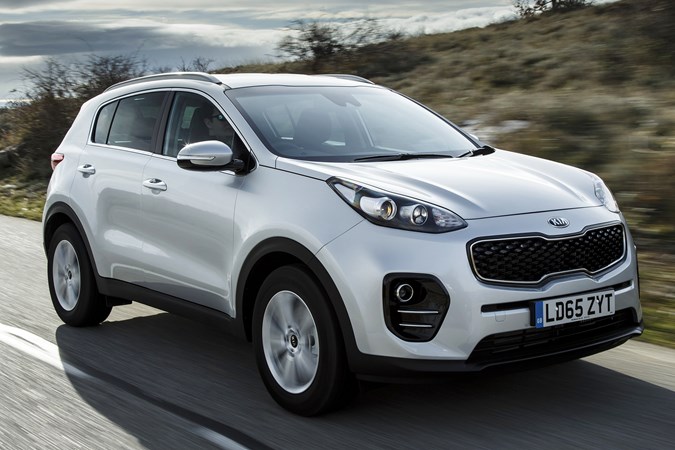

The choice of three diesel engines have OK low-down punch, and the 1.7-litre is better on fuel than the 2.0-litre. More powerful versions have four-wheel drive, but most Sportages are front-wheel drive. You can get petrol engines too: the 1.6-litre turbo is smooth but thirsty, while the non-turbo 1.6 GDi is pretty slow and gutless. That’s why most prefer a diesel Sportage.
Read our full Kia Sportage review
Pros
- Long warranty
- Good build quality
- Distinctive styling
Cons
- Interior is quite bland
- 4x4 models are rare
Popular and stylish Renault is ideal if you need more space
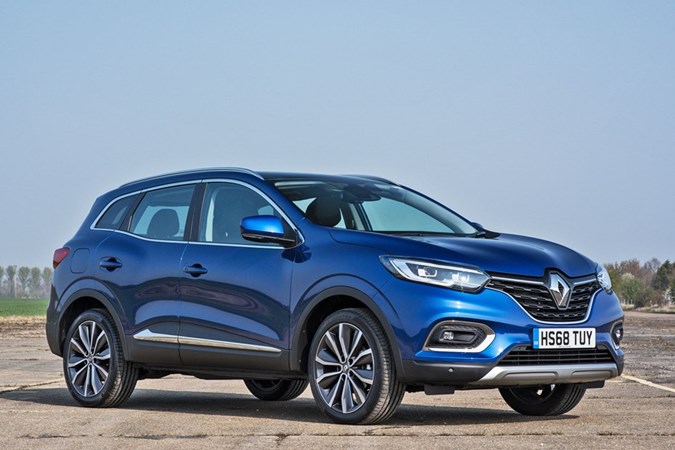

You’ll find lots of Iconic-grade models in the classifieds. It’s a well-equipped trim, with flash alloy wheels and standard sat nav. No Kadjar feels downmarket though, thanks to rich interior quality and classy detailing – it actually feels more premium than the Qashqai in this regard. Those curvaceous lines are ageing well too, meaning even the earliest cars still look modern.
Read our full Renault Kadjar review
Pros
- Good Euro NCAP score
- Well-equipped interior
- Impressive engines
Cons
- Some cheap plastics
- Small boot for the class
Competitive family SUV in plentiful supply
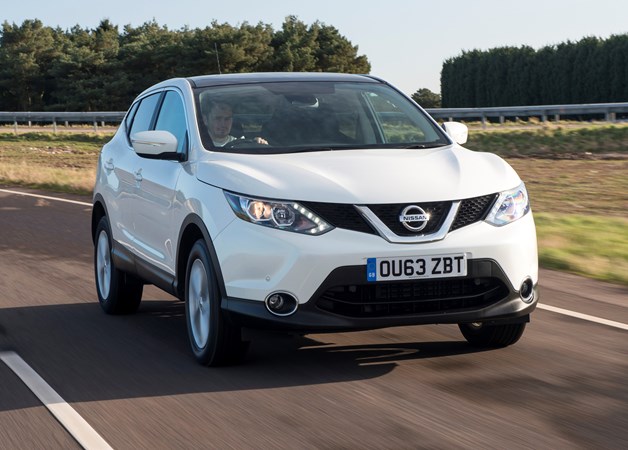

With added technology, including surround-view cameras and advanced driver assistants, sharper looks, more efficient engines and better quality throughout, this is a worthy compromise for most families looking for 4x4 style without the cost or complexity. On the road, the Qashqai performs well. It’s very easy to drive, with safe and assured handling. Fuel economy and CO2 emissions are attractive across the range, with even the most powerful petrol engine averaging a claimed 50mpg.
Read our full Nissan Qashqai review
Pros
- Solid build quality
- Plenty of equipment
- Loads of cars to choose from
Cons
- Everyone has one
- Not that fun to drive
Skoda's family cars now offer Saab-esque levels of sensible, understated quality
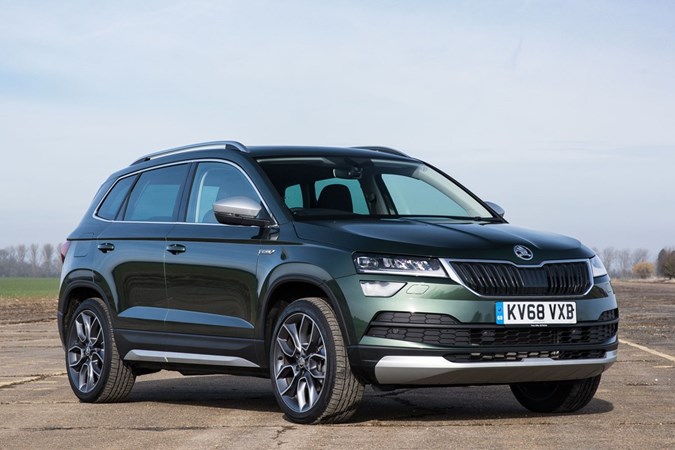

Introduced in 2017, most used Karoqs will be front-wheel drive, although Skoda did offer all-wheel drive versions too. TSI petrol engines are fun, and the smaller versions are economical, while 1.6-litre TDI and 2.0-litre TDI diesels are perfect all-rounders. Skoda reliability is proving impressive as well.
If you fancy the Skoda but want something with a sportier image and feel, a used SEAT Ateca is worth checking out.
Read our full Skoda Karoq review
Pros
- Great build quality
- Immensely practical
- Easy to drive
Cons
- Not that sharp to drive
- Optional extras make a huge difference at a cost
The ultimate driving machine for family life
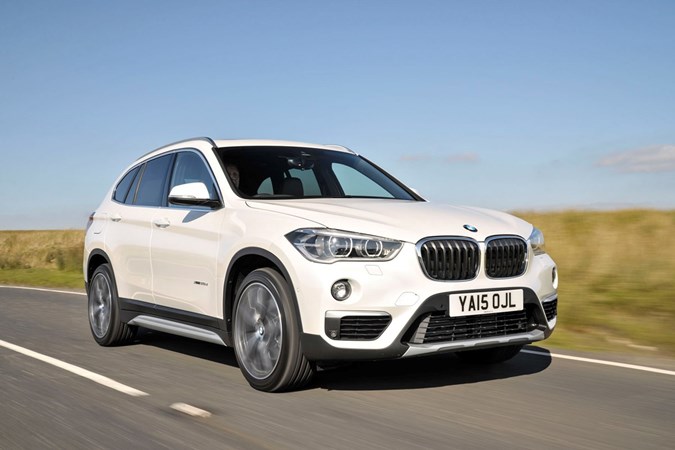

So long as you listen out for low-speed suspension noises, and check for interior electrical niggles (particularly with the infotainment), it’s generally robust and reliable. The engines are excellent, too – even the 1.5-litre turbo sDrive18i is top-notch, while the diesels are super-efficient. xDrive versions offer all-wheel drive grip for wintery weather, and there’s an xDrive25e plug-in hybrid with a 35-mile electric range.
Prices for used BMW X1s are strong, and the same platform is used for the MINI Countryman. It is better value if you want a newer example or hybrid technology.
Read our full BMW X1 review
Pros
- Premium badge on a sensible car
- Impressive economy and performance
- Great interior quality
Cons
- Firm ride
- Servicing and parts are expensive
The 21st-century family Ford appeals to drivers as well as passengers
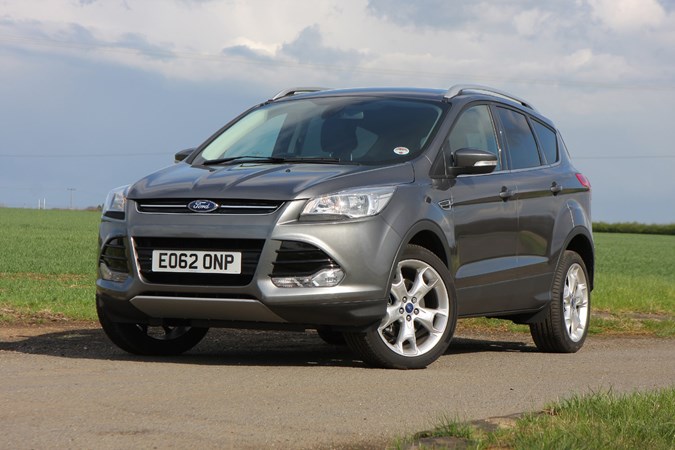

Our preferred version is the facelifted model, from 2016. It’s easy to spot, thanks to its extra-large two-bar grille (finished either in black or silver). It also gained Ford's Sync 3 touchscreen infotainment and a super new 1.5-litre turbodiesel, which is very economical and smoother than the 2.0-litre alternative. We also like the 1.5-litre Ecoboost petrol.
Read our full Ford Kuga review
Pros
- Great to drive
- Relatively cheap to run
- Plenty of safety tech
Cons
- Keen handling = firm ride
- Finding a good cheap one is tricky
Halfway between a Puma and a Kuga, the CX-3's practical, pragmatic and fun


It’s well-equipped with alloy wheels, all-round electric windows and air-conditioning. We’re also big fans of the way the CX-3 drives, with impressive body control and high levels of grip. The lower-powered petrol with two-wheel drive is our favourite, thanks to its ample performance, smooth power delivery and overall affordability. We’d recommend choosing one of the SE or SE-L models for the smoother ride on 16-inch alloy wheels.
Read our full Mazda CX-3 review
Pros
- Great value for money
- Enjoyable to drive
- Still looks modern
Cons
- Paint and rust issues reported
- Dated infotainment system
Top buying tips for used SUVs
Which used SUV is the most economical?
The Toyota C-HR is a great choice if you’re looking for a fuel-efficient used SUV. It’s available with a choice of two self-charging hybrid powertrains that can return upwards of 50mpg if driven carefully. You also have the added benefit of not needing to plug it into the mains to get the best from it.
Are there any electric or hybrid SUVs for under £15,000?
Hybrid yes. But you’ll struggle to find a good electric SUV at this budget. The technology is still too new and expensive to have filtered down to the lower echelons of the used car market on a large scale. However, we’ve scoured the classified and found a couple. You can pick up an original Kia Soul EV for around £8,000 and an early Vauxhall Mokka Electric for £15,000.
Has it got signs of off-road use?
Look for signs of wear and tear on the exterior. With less ground clearance compared to a typical SUV, scuff marks could indicate signs of use in tougher environments. Look for kerbing on the wheels, too, as urban crossover drivers may have chosen them to clear awkward driveways or particularly bad potholed roads.
Do you need to tow?
Thanks to the smaller dimensions, engine capacity and typically two-wheel drive configuration, there will be a compromise in towing capacity. A Mazda CX-3 has a tow limit of 1,200kg, while the slightly larger Range Rover Evoque can tow between 1,500kg and 1,800kg. A diesel engine would provide a more relaxed drive too if this is the case.
Avoid sportier trim levels for maximum comfort
Demand for large, sporty-looking SUVs has grown over the past decade and this has resulted in manufacturers offering models with bodykits, larger wheels and stiffer suspension. While some can make marginal improvements in high-speed handling, they can have a negative effect on ride quality. Sporty coupe-SUVs designed with a sloping roof can also impede on rear passenger headroom.
Have 4x4 models been maintained correctly?
Many crossovers with all-wheel drive have less-sophisticated systems than their larger SUV brethren. Quite often, the 4x4 drive only works when the front wheels are slipping, and relies on the proper maintenance of couplings, driveshafts and tyres to work correctly. On higher-mileage examples look for tyres being rotated/changed in sets of four, and check the service schedule for terms like propshaft and viscous coupling inspection, lubrication/fluid changes in addition to the normal maintenance expected.
Check spares costs if you plan on long-term ownership
If you’re going to keep your crossover for a while, make sure there are no nasty surprises waiting compared to a hatchback equivalent. All-wheel drive models in particular may have different brakes, suspension and exhaust systems with higher costs, so it’s worth asking beforehand and planning your maintenance accordingly.
Just so you know, we may receive a commission or other compensation from the links on this website - read why you should trust us.


